Led by Harry E Frost
On what was at first a cloudy, but then a gloriously sunny day, we held our annual walking tour. This year we were led by Harry E Frost, looking into what was once the biggest industry in Bridgwater, brick and tile making. Coming from a long line of Bridgwater Brick and Tile makers, Harry is a world renowned expert in porcelain, has appeared as an expert on the Antiques Roadshow and is perhaps the last Bridgwater man to still be in the British ceramics industry. We had a good turnout of about thirty people and in the spring sunshine we ambled round the cemetery. Harry talked about the town, the industry and our ancestors who created, managed, worked and supported it. He explained how our ancestors toiled in the scorching clamps (kilns), slogged to dig the clay, and endeavoured to sell it all around the world.
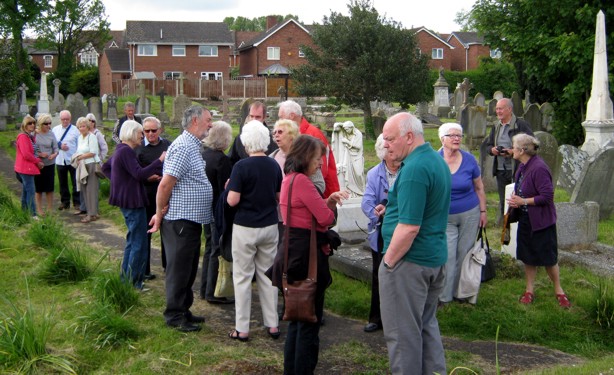
The attendees gathered by the mound of the former Dissenters' chapel, most of the tour being in this part of the cemetery because of the strength of religious non-conformism among the industrialists in the town.
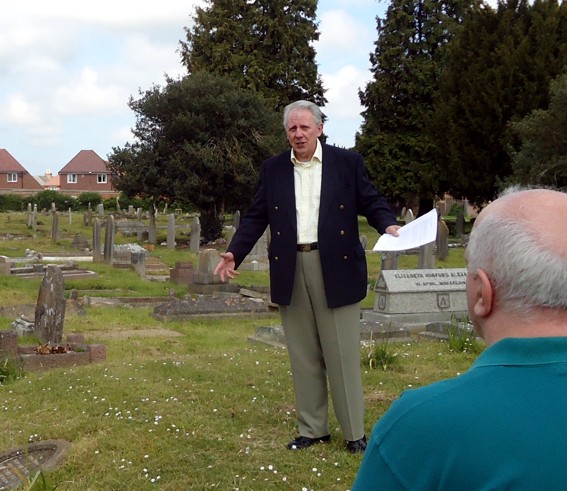
Harry welcomed everyone from atop of the mound and began by outlining the roots of the brick and tile making in world history to the development of the industry in the town and his research into the origins of the famous Bath Brick. The chairman had remembered to bring an old battered one along, which was passed round.
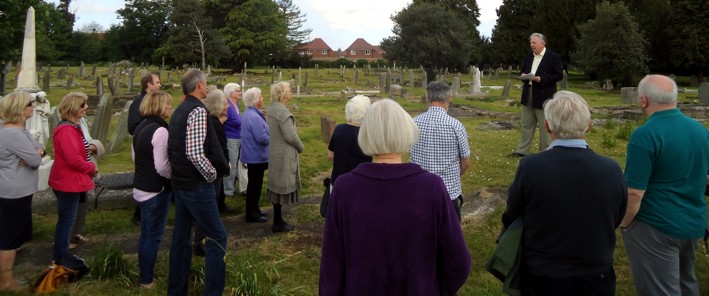
Harry remarked upon some of the oddities of the industry, how Bridgwater was such a close knit community in those days that there were often close family relations between the brick and tile yard owners and their workers, yet the owners were buried in the height of grandeur, while the workers, sometimes separated only by one generation, often ended up in unmarked graves. On a lighter side, we also learned how it was essential to have long arms when making chimney pots!
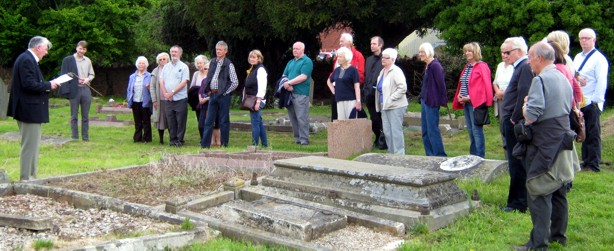
We briefly stopped by the grave of the Sully family, local coal merchants, learning how much more coal was needed to make a brick and tiles than clay and it all had to be bought in from South Wales, first by ship then by rail. This made certain entrepreneurs very rich.
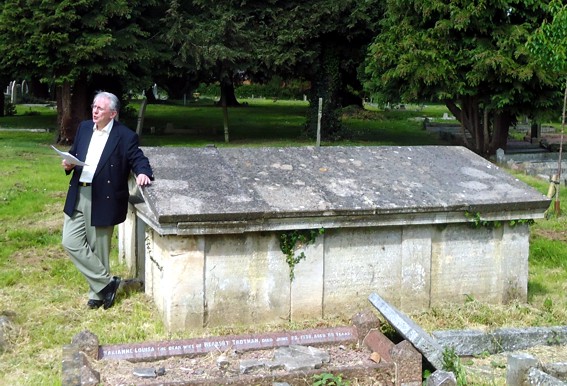
Harry then stopped at the great vault for the Browne family. They had started out in finance and came to acquire brick yards, in a situation similar (although much less cruel) to the fictional Warleggans in Poldark. Harry remarked how it was appropriate for a family who made Roman pantile roofing tiles to make their mausoleum in the form of a little Roman temple.
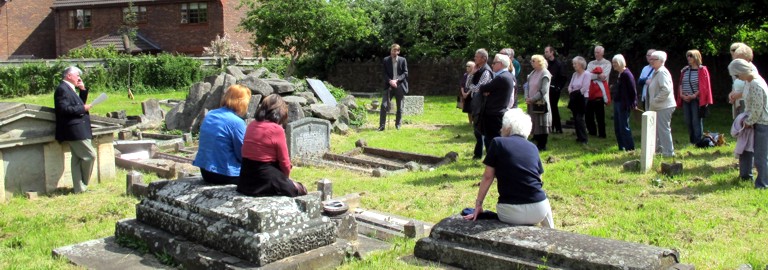
Harry also talked about the importance of Unitarianism as a binding force between the community of manufacturers, their religious conviction being a source of persecution against them, but also a driving force behind their innovation and drive.
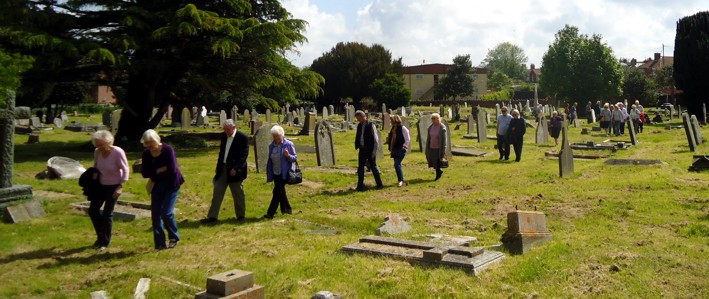
We then strolled right across the cemetery, basking in the good weather as we went.

From the grandeur of the Browne vault we came to the poverty of the paupers' graveyard. The life of a brick and tile maker was seasonal, difficult, uncertain and often dangerous. Sadly, they could seldom afford a proper burial so ended up here, deposited with a number of other recently deceased people in an unmarked grave.

We then ambled back to the main path and the Dissenters' section and the Board obelisk and the Symons angel. The Board family experimented with Portland cement, building Bridgwater's Castle House popularly known as the Concrete Castle.

The Symons family, another manufacturing family, invented the double pantile and it emerged during the talk that some of their descendants had come along to the talk. They were delighted to see their family memorial in its repaired condition, having previously been smashed by vandalism.
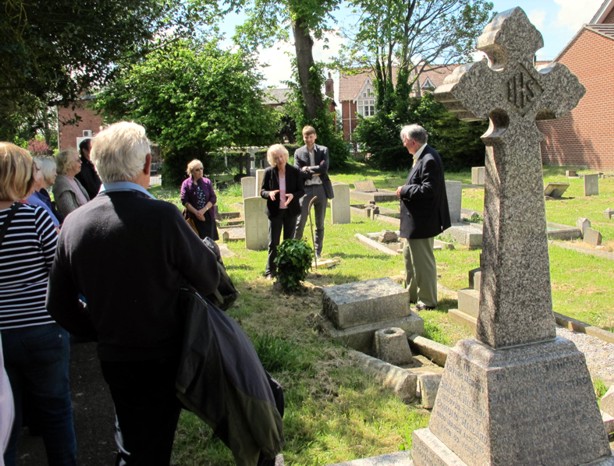
We then passed to Harry's final stop in the Anglican section and the Goodland memorial, where he reflected on his family's own connections and friends, and his own journey through the ceramics industry, bringing the story right up to today. Our secretary, Bernice, then thanked Harry on behalf of the assembled, who was met with a thankful round of applause.
